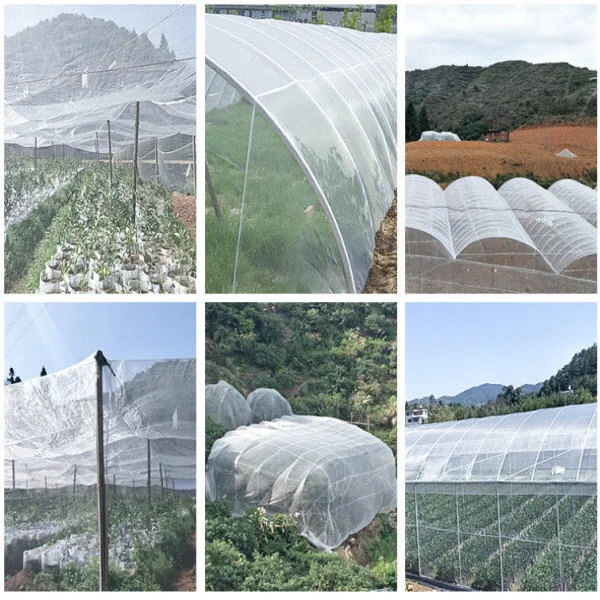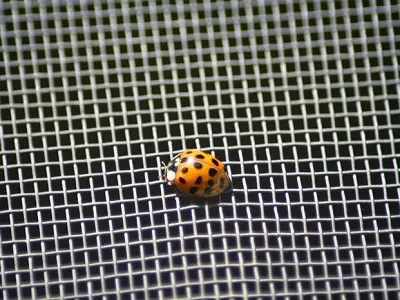© 2020 Hefei Better Technology Co., Ltd. All rights reserved.Site Map Designed by iwonder.cn
Tel
086-19155119097
Why settle for a boring old net when you can have an anti insect net? This extruded mesh is perfect for modern agriculture, keeping your vegetables and fruits safe from pests. Plus, it looks great on grapes, citrus trees, apple trees, or European cherry fruit flies.
To quick browse articles, Here are the main points below:
Nets are an effective means of crop protection against a wide range of flying insects, such as cabbage white butterfly, codling moth, carrot fly and spotless ladybird. They can be used on their own or in combination with other methods, such as insecticides, to give better overall protection.
Nets work by excluding insects from the protected area or by trapping them so they cannot lay their eggs or feed on the crop. The size of the mesh used will determine which insects are excluded or trapped. Smaller mesh sizes (e.g. 1mm) will exclude most flying insects, including very small ones such as thrips, while larger mesh sizes (e.g. 8mm) will exclude only the larger flying insects, such as moths.
In general, the most effective nets are those that exclude the widest range of insect pests while still allowing good air and light penetration and easy access for pollinators such as bees.

(anti insect net application)
Anti-insect nets are becoming increasingly popular in Europe as a way to protect crops from pests. There are a number of benefits to using these nets, including:
-They can significantly reduce the need for pesticides, which is better for the environment and human health.
-They can help improve crop yields by protecting plants from damage by insects.
-They can help prolong the growing season by protecting crops from early frost damage.
-They can be used in conjunction with other pest management practices, such as traps and baits, to provide an even higher level of protection.
There are several types of anti-insect nets available on the market, each with its own advantages and disadvantages.
Extruded mesh is a type of netting that is made from extruded HDPE or polypropylene. It is characterized by its high strength and durability, making it an ideal choice for applications where a long-lasting net is required, such as in agriculture or horticulture. However, the extruded mesh is also more expensive than other types of nets.
Knitted mesh is another type of netting made from interlocking loops of yarn. Knitted mesh has a softer feel than extruded mesh and is less likely to tear or snag on objects. It is often used in applications where a softer, more pliable net is required, such as in greenhouse or poultry applications. However, the knitted mesh is not as strong as extruded mesh and will degrade over time when exposed to sunlight or other UV rays.
Woven nylon or polyester are the most common type of insect netting. They are made from interwoven strands of yarn and are available in a variety of colors (including black to keep out light). Woven nets are strong and pliable, making them suitable for a range of applications. However, they are not as durable as extruded nets and will degrade over time when exposed to sunlight or other UV rays.
The use of anti-insect netting can be traced back to the 19th century, when it was first used in Europe to protect crops from pests. It wasn't until the mid-20th century that the use of anti-insect netting began to spread to other parts of the world, as modern agriculture began to take hold.
Today, anti insect netting is an essential tool in modern agriculture, particularly in the production of fruits and vegetables. It is used to protect crops from a wide variety of pests, including beetles, moths, flies, and mosquitoes. Anti-insect netting is also used in horticulture to protect trees and shrubs from insect damage.
There are a variety of different types of anti-insect netting available on the market today. The most common type is extruded mesh, which is made from plastic or metal. Extruded mesh is available in a wide range of sizes and can be customized to fit any application.

(metal insect net)
Another type of anti-insect netting is known as knitted mesh. Knitted mesh is made from synthetic or natural fibers that are interwoven to form a tight fabric. Knitted mesh is often used in horticulture because it provides superior protection against pests.
No matter what type of anti-insect netting you need, there is a product on the market that will suit your needs. With so many different types and applications for anti-insect netting, there is sure to be a product that meets your specific requirements.
To get the most out of your anti-insect net, it is important to know how to use it correctly. Here are some tips:
1. Make sure the net is the right size for your needs.
2. Install the netting over the area you want to protect, making sure it is secure and taut.
3. If you are using the netting to protect fruit trees, make sure the trees are completely covered, including the trunk and branches.
4. Check the netting regularly for holes or tears and repair or replace it as needed.
Extruded mesh has a number of advantages over other types of insect netting. It is stronger and more durable, so it will last longer and provide better protection for your crops. It is also easier to install, so you will save time and money on labor costs.
Extruded mesh, also known as anti-insect net, is a type of netting that is made from extruded plastic. It is commonly used in modern agriculture to protect crops from insects, birds, and other pests. Extruded mesh is also used in horticulture to create barriers that keep animals out of gardens and landscaped areas.There are two main types of extruded mesh: nylon and polyethylene.
Nylon extruded mesh is made from nylon 6 or nylon 66. It is strong and durable, making it an ideal choice for agricultural applications. Nylon extruded mesh is available in a variety of colors, including black, green, and white.
Polyethylene extruded mesh is made from high-density polyethylene (HDPE). It is a popular choice for agricultural applications because it is lightweight and easy to handle. Polyethylene extruded mesh is available in a variety of colors, including black, green, blue, and white.
Extruded mesh has been used in agriculture for many years, but its popularity has increased in recent years due to the rise of modern agriculture.
Extruded mesh is a type of netting that is made by extruding plastic sheets through a die. This process creates a strong, yet lightweight netting that is perfect for use in agriculture.
Extruded mesh is available in a variety of sizes and colors, making it versatile enough to be used for a variety of applications. It is commonly used to create barriers around plants and trees to keep insects and other pests out.
Extruded mesh is also frequently used in greenhouses and other agricultural buildings to keep the environment inside stable and controlled.
The history of extruded mesh can be traced back to the early days of plastic production. In the early 1900s, scientists began experimenting with ways to create long strands of plastic from shorter ones. This led to the development of the extrusion process, which was originally used to create pipes and tubing.
It wasn't until the 1950s that extrusion was first used to create netting. The process was perfected over the next few decades, and the extruded mesh has been an important part of agriculture ever since.
Extruded mesh is a modern agricultural netting used to protect crops from pests. The most common type of extruded mesh is made from high-density polyethylene (HDPE) or polypropylene (PP) plastic. The mesh is available in different sizes, with the smaller openings being used to protect vegetables and fruits from insects, and the larger openings being used to protect apple trees and European cherry fruit flies.
Modern agriculture has many benefits, including increased crop yields, reduced pesticides and herbicides, and more efficient water use.